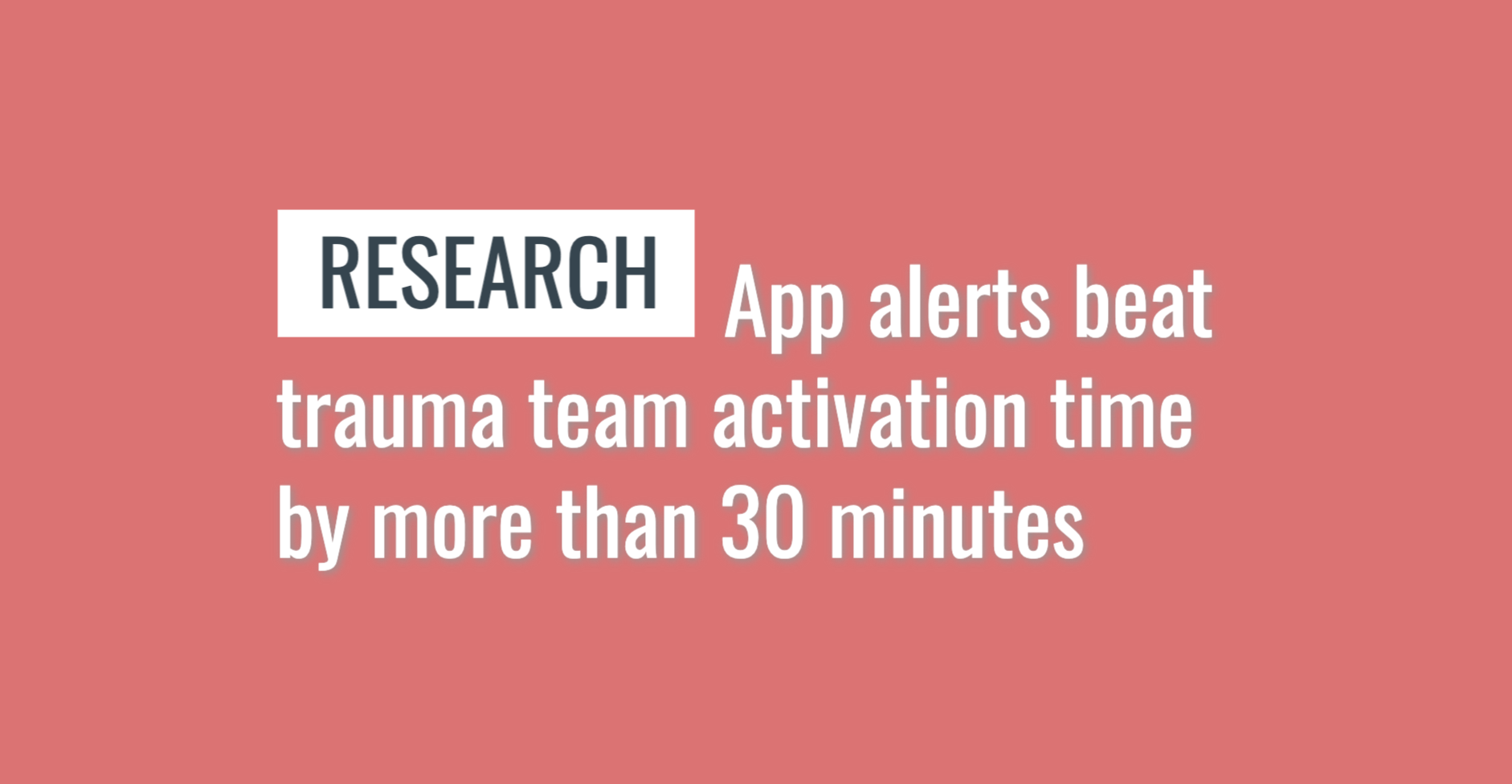A smartphone app that curates 911 dispatch data reported serious injury incidents more than 30 minutes before trauma team activation (TTA), according to researchers at a Level I trauma center in New York City. The additional advanced notice provided by the app could give trauma teams more time to prepare for some critically injured patients.
The study was conducted by trauma program leaders at NYU Langone Hospital in Brooklyn. Results of the study were recently published on the website of Surgery in advance of print.
Boost in prehospital notification time
For this retrospective study, the NYU Langone team examined data generated by Citizen — a free smartphone application that provides real-time alerts on local criminal violence, motor vehicle crashes and other threats to public safety.
The study group began by pulling data on patients entered in the trauma registry during an 18-month period in 2018 and 2019. The group then attempted to match registry patient records to Citizen incident reports based on injury time, location and mechanism. For each matched patient, the researchers compared Citizen incident alert time with the TTA time and ED arrival time as recorded in the registry.
Out of 3,684 trauma registry entries, the team found perfect matches in Citizen incident reports for 209 patients (5.7%). For these patients:
- App alerts preceded TTA time for 96.1% of patients
- The app reported incidents a median of 36 minutes earlier than TTA time
- App alerts preceded ED arrival time for 96.2% of patients
- The app reported incidents a median of 32 minutes earlier than ED arrival time
For these patients, traditional TTA processes provided little or no advanced notice to the trauma team. In fact, the trauma team activation preceded the patient’s arrival in the ED for only 56.6% of incidents.
More time to prepare, but limitations exist
The authors of the study believe smartphone technology could play a role in improving prehospital notification time for injured patients.
“Our study demonstrated that app alerts curated from 911 dispatch data and immediately pushed to electronic devices notified app users more than a median half an hour earlier than traditional systems for EMS- or ED-driven TTA and earlier than EMS arrival to the ED,” the researchers wrote.
The advanced notice provided by app alerts could help providers prepare for patients who need specialized care. “Such advanced notice may allow additional time to prepare to receive critically injured patients, including gathering treatment resources such as massive transfusion protocol products and procedural equipment, or more rapid preparation of an OR IR suite,” the authors wrote.
However, the study shows that the smartphone app captured only a small percentage of injury incidents that require TTA. Overall, the authors noted that app alerts skew toward certain populations and mechanisms of injury:
“Our data show that certain types of patients and MOIs are more likely to become app alerts, in particular, young males involved in nonaccidental trauma or motor vehicle-related events. Elderly or female patients and patients suffering falls are less likely to be transmitted as app alerts.”
Ways to build on the system
The study group identified several possible ways to optimize app functionality for trauma. For example, the app company could dedicate special staff to identify trauma victims. These staff could work with trauma center teams to confirm which alert patients eventually became TTAs.
“In addition, if app-based medical alerts are able to accurately include precise details of hemodynamic status and nature of the injury,” the authors wrote, “future work may examine opportunities to prepare for emergency operations in the trauma bay or to bypass the trauma bay entirely in favor of direct-to-OR transport where life-saving resources may be more concentrated and more easily accessible.”

